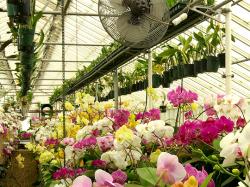The Other Orchid Thief: Virus Ravages The Popular Flower
May 6, 2010 | 1 min to read

For hobbyists like Colette Theriault, a photographer who lives in Ontario, orchids are an addiction. Theriault bought her first Phalaenopsis in 1999 and nurtured it for three years before it bloomed its first pink flowers. The success led to more, until she had 25 orchids crowding her windowsills. In March she discovered yellow spots on the leaves of her collection—a telltale sign of a virus, like those plaguing the orchid industry.
Theriault is now fighting a losing battle to save the first orchid she ever bought. "It's psychological for me," she says. "I was mad at myself for buying more plants."
Not long ago, only a rarified elite kept orchids in their homes. Collected from the tropics, orchids transported to other climates lacked the conditions needed to flourish and were nearly impossible to breed. But in recent decades growers have learned how to clone thousands of identical plants, and an industry has grown around the flowers. As growers have bred increasingly baroque varieties, sales have exploded, making orchids the second most sold houseplant in the U.S. (after poinsettia). Go to any Home Depot and brazen sprays of purple orchids are on display along with aisles of drywall and doorknobs. Even corner bodegas in big cities tend to carry a droopy Phalaenopsis or two for sale as house gifts.
To read the rest of this story please go to: Scientific American
